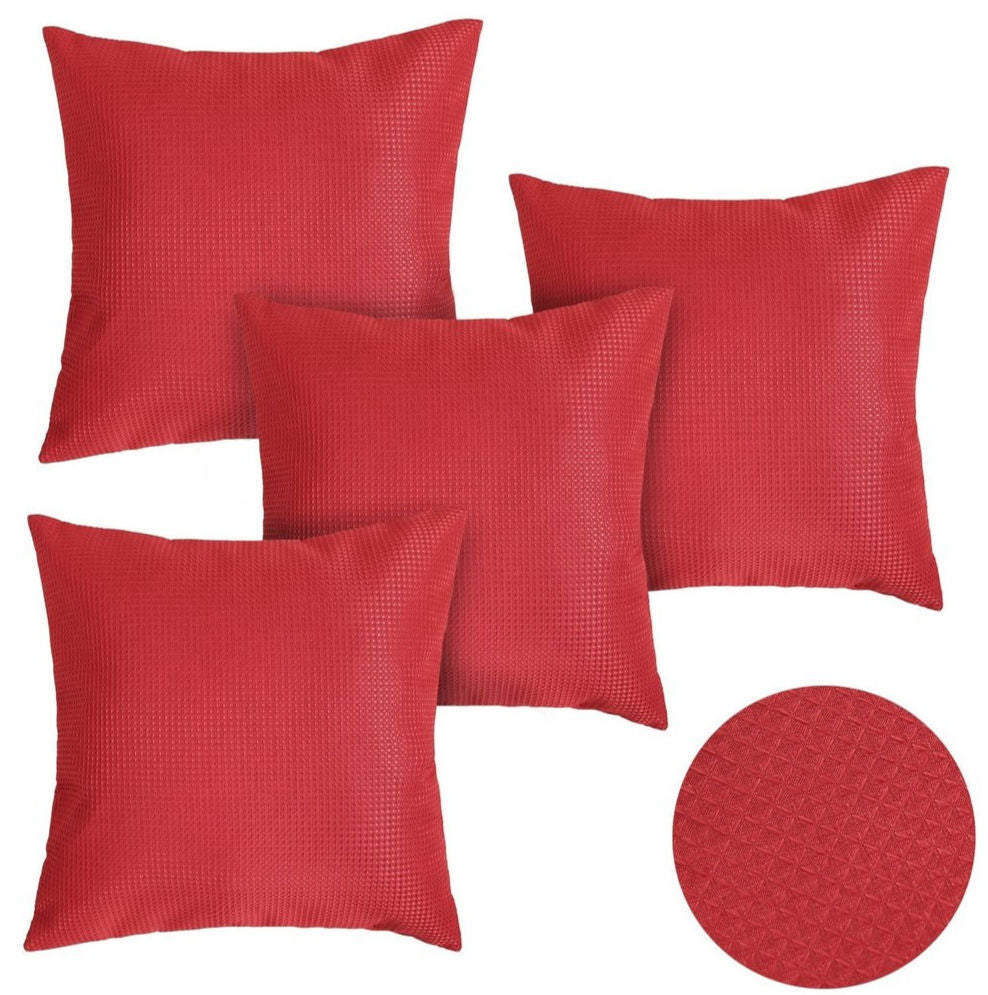How to Wash Throw Pillows

Throw pillows add color and texture to a room and help make furniture more comfortable. Over time, pillows pick up oils, spills, dust and grime. To keep colors vibrant and materials fresh, throw pillows must be cleaned periodically.
There are two parts to a decorative pillow, the cover and the insert. Inserts are usually made of fiber-fill, feathers or foam. Covers can be made of any fabric. Covers and inserts should be cleaned separately when possible.
Cleaning the Cover
If you can, remove the cover. Most covers have zippers or flaps for easy removal. If the cover is sewn shut, use a seam ripper to open a seam at one edge.
If you cannot safely remove the cover, follow the steps below to identify the fabric and test for dye stability. If the fabric is washable and doesn't run, the entire pillow can be laundered. If the fabric is delicate or dyes run, vacuum or beat the pillow by hand to remove dust and soil. To neutralize odors, sprinkle baking soda on the pillow, let it sit a few minutes, then vacuum it off. To freshen the interior, place fiber-fill and feather pillows in a dryer on air. Place foam pillows in the sun. Otherwise, ask your dry cleaner if the pillow can be safely dry-cleaned.
To launder the cover, follow the instructions on the care label. It should identify the material of the cover and fill. Many fabrics, including cotton, polyester and other synthetics, may be machine-washed. However, silks, linen, velvet and wool should be washed by hand or dry-cleaned. Leather and suede should not be washed. If the cover has decorative trim, hand-washing or dry cleaning will protect these embellishments.
If there is no tag, try to identify the fabric. If you are not sure if it can be washed, wet a corner with mild, soapy water to see how the material and dyes perform. Blot with a clean, white towel. Let it dry. If colors have run, or if the fabric has shrunk or shows water rings, washing may damage the cover. In this case, it should be dry-cleaned. If it looks fine, washing is suitable.
If the cover has spots, spot-clean those areas before laundering. Using a soapy, damp cloth, blot the stain by working from the edge to the inside to avoid enlarging the spot. Blot with a damp cloth to remove soap. Air dry.
To machine-wash, use cold water on the delicate cycle. If you are washing several covers at a time, separate into whites and darks. Use a mild detergent made for fine fabrics.
To dry, first blot with a clean, white towel. Line-dry or dry flat. If using a dryer, set the temperature to air or low to prevent shrinking. After removing from the dryer, block to restore the shape.
To hand-wash, fill a tub with cold water. Using a mild detergent, gently squeeze the water and detergent through the fabric. You may need to rinse several times to remove all the soap. Dry as above.
Cleaning the Insert

Most insert materials, including fiber-fill and feathers, can be machine-washed. Foam inserts should be washed by hand. For top-loading machines, wash at least two pillows at a time to balance the machine. Otherwise, add a few white towels. Fill the machine with cold water, add detergent, and then add the pillows. Wash on delicate. You may need to run the pillows through the rinse cycle several times to remove all the soap. If you are washing feathers, very little soap is needed.
After removing from the washer, fluff the pillows. Put into a dryer with tennis balls. Use low heat for fiber-filled pillows. Dry feather pillows on medium heat. Fluff several times during the drying process. Be sure all moisture is gone before removing from the dryer.
Wash foam inserts by hand. Fill a tub with warm water and mild detergent. Submerge the pillow, and squeeze to saturate with soapy water. To rinse, squeeze in clean water. You may need to rinse several times.
To dry, squeeze as much water out of the foam as possible. Place the pillow between two towels and press to remove additional moisture. Place flat on a drying rack until the insert is completely dry. This may take more than a day. Foam should not be put in a dryer or dried near heat or flame.
Reassembling the Pillow
Block the insert and cover to restore the shape. Gently work the insert into the cover. If a seam was opened, hand-stitch to close the gap. Your freshly cleaned pillow should be ready for use again.
Feel free to join in our Affiliate Programs
